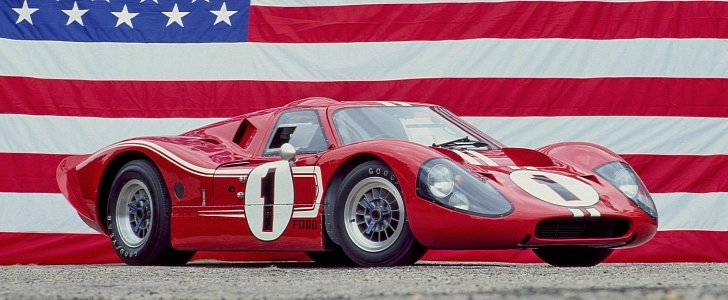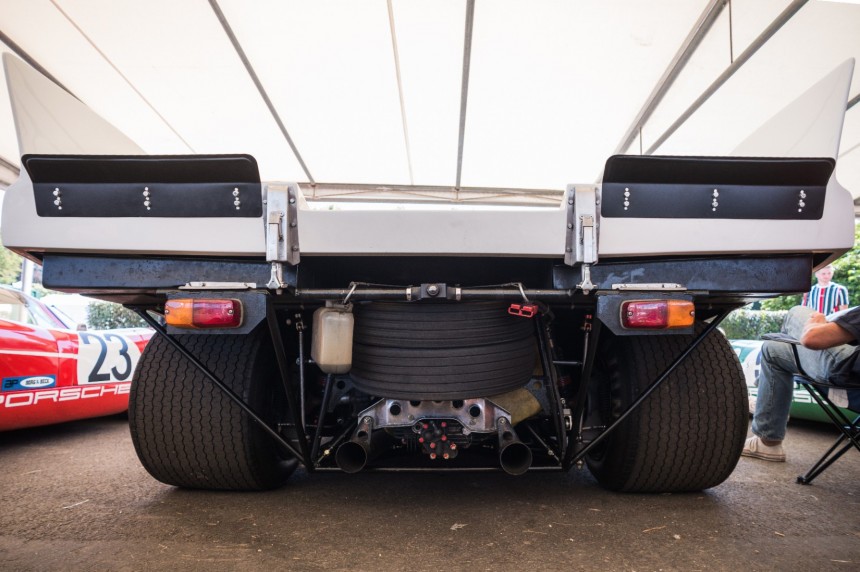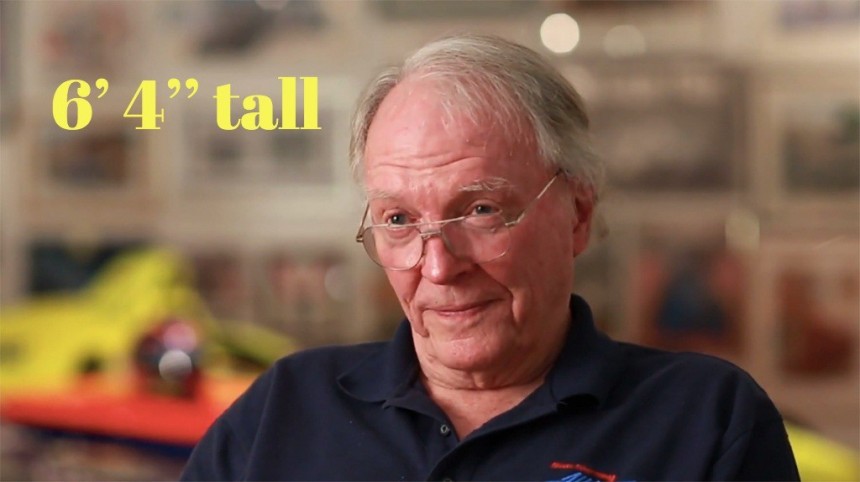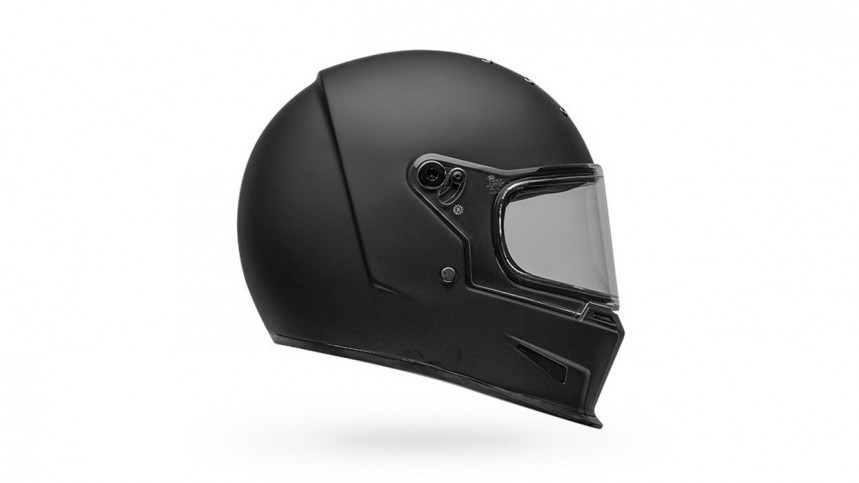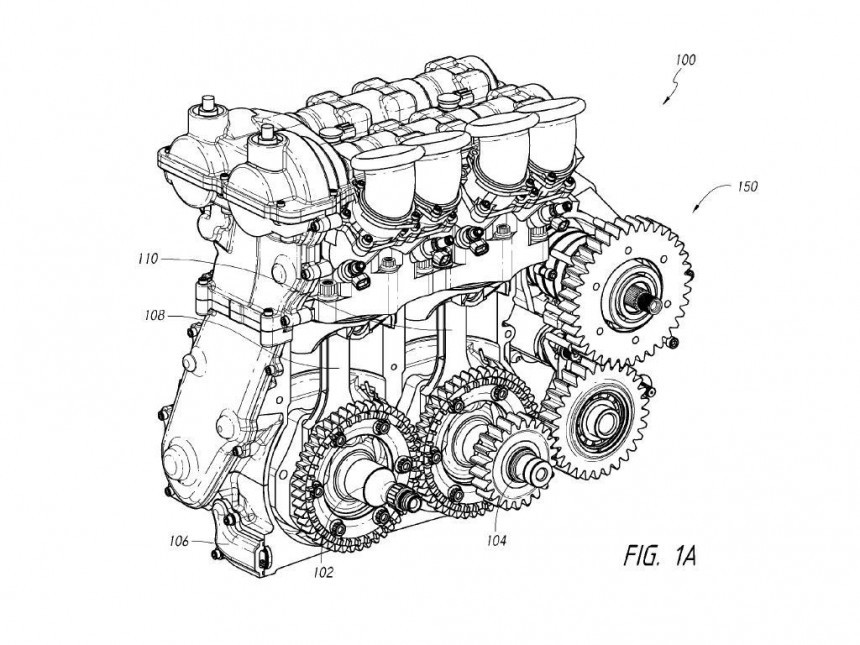Dan Gurney was a racing car driver, race car builder and it really wouldn’t be a stretch to call him an inventor. In the world of racing, he was active from 1959 to 1970 and he won races in Formula One, Indy Car, NASCAR, Can-AM, and Trans-Am and he even triumphed in the 24 Hours of Le Mans in 1967 with the GT40.
It was after this Le Mans win that he reportedly started spraying the bottle of Champagne he had on the podium for celebration purposes. That was so popular that it became a motorsport tradition that still goes on to this day.
Apart from his racing succeses, Dan Gurney also made its mark on several inventions that some people now either take for granted or are about to. He was one of the few polymaths in the automotive sector until his death, a true renaissance man.
Away from the cockpit, Gurney was interested in engineering. He invented several unique go-faster bits for racing cars and even a new type of engine, and it’s probably these innovations that will keep him in people’s memory over time. His presence in Formula One is unmatched by another American, as he not only won many races, but he also did so in an American car that he played a major part in creating, the iconic Eagle-Weslake TG1.
The principle behind it (upping pressure on the pressure side and reducing it on the suction side of the airfoil) was not new, but it was Gurney who first applied it on a racing car, in 1971.
Nowadays it’s still used in the world of racing (although not as a separate bolt-on piece, but rather an upward kink on the end of some spoilers), but also on the vertical stabilizer of helicopters. In this aeronautical application, its purpose is to prevent lift reversal, a phenomenon that can occur for thick sections of airfoil when they are at low angles of attack.
The Gurney Flap works so well in this application that some helicopters, like the Eurocopter AS355, has double flaps that project out from both sides of the vertical stabilizer rotor.
Since Gurney couldn’t fit in the driver's seat without some serious structural modifications, the decision was made to cut the roof, which was also part of the door, to add a bubble-shaped piece, thus improving headroom immensely.
It was therefore not an aerodynamic aid, but just a means to allow Gurney to fit inside the GT40 . Nowadays, it is common to see it on low sports cars (usually classics) that are driven by tall drivers and/or with a racing helmet.
When Dan Gurney first used the full-face helmet in car racing, it had already been in use in the world of motocross since the early 1960s. But he was the first to realize its genuine usefulness in the world of car racing and officially wore one at the 1968 500 Miles of Indianapolis race.
Gurney recounted the story that made him realize full-face protection was necessary for tarmac circuit racing too - during a tense race in the mid-1950s when he was trying to overtake a car whose rear tires flung a stone that went right through the windscreen of the Ferrari he was driving in that race. He later remarked that it was not so much a pebble, but a bullet, judging by its sheer speed and force.
This engine was designed to be used in motorcycles (although the design could have been applied to larger automotive engines) and it featured an oversquare design (such engines are also known as short-stroke engines).
This essentially means the bore of the cylinder is larger than the stroke of the piston and such engines allow for higher RPMs (and inherently more power) without excessive piston speed. It’s through this principle that some modern Formula One engines are able to rev to 20,000 rpm safely.
Gurney’s patented engine design, therefore, promised low vibration (or what he called “turbine smoothness”), lower maintenance, a predictable torque curve, improved fuel efficiency, lower part count and improved reliability. From the information we were able to gather, though, none were ever built although there is currently interest to create a working prototype for testing purposes.
Apart from his racing succeses, Dan Gurney also made its mark on several inventions that some people now either take for granted or are about to. He was one of the few polymaths in the automotive sector until his death, a true renaissance man.
Away from the cockpit, Gurney was interested in engineering. He invented several unique go-faster bits for racing cars and even a new type of engine, and it’s probably these innovations that will keep him in people’s memory over time. His presence in Formula One is unmatched by another American, as he not only won many races, but he also did so in an American car that he played a major part in creating, the iconic Eagle-Weslake TG1.
Gurney Flap
Dan Gurney’s most famous contribution to the world of motorsport is the Gurney Flap. It is an additional element for rear spoilers - it projects upward from the trailing edge of a wing (sometimes even at ninety degrees) to increase the performance of a standard airfoil.The principle behind it (upping pressure on the pressure side and reducing it on the suction side of the airfoil) was not new, but it was Gurney who first applied it on a racing car, in 1971.
Nowadays it’s still used in the world of racing (although not as a separate bolt-on piece, but rather an upward kink on the end of some spoilers), but also on the vertical stabilizer of helicopters. In this aeronautical application, its purpose is to prevent lift reversal, a phenomenon that can occur for thick sections of airfoil when they are at low angles of attack.
The Gurney Flap works so well in this application that some helicopters, like the Eurocopter AS355, has double flaps that project out from both sides of the vertical stabilizer rotor.
Gurney Bubble
Dan Gurney was a tall man (6’ 4’’ or 193 cm) and this made it difficult for him to fit in some very closed top racing cars. One such car was the 1967 Ford GT40 with which he won the Le Mans 24 hour race that year. In case you didn't know by now, the "40" in "GT40" means that the race car was approximately 40 inches tall, so room for a tall drive with his helmet on was pretty much non-existant.Since Gurney couldn’t fit in the driver's seat without some serious structural modifications, the decision was made to cut the roof, which was also part of the door, to add a bubble-shaped piece, thus improving headroom immensely.
It was therefore not an aerodynamic aid, but just a means to allow Gurney to fit inside the GT40 . Nowadays, it is common to see it on low sports cars (usually classics) that are driven by tall drivers and/or with a racing helmet.
Full-face helmet
You read that right, there was a time when racing drivers wore leather caps for head protection, and then there was the advent of helmets, but even those were used for a while without contributing as much as possible to the preservation of their wearers. The full-face racing helmets that drivers from almost all series use today was actually introduced by our renaissance man himself.When Dan Gurney first used the full-face helmet in car racing, it had already been in use in the world of motocross since the early 1960s. But he was the first to realize its genuine usefulness in the world of car racing and officially wore one at the 1968 500 Miles of Indianapolis race.
Gurney recounted the story that made him realize full-face protection was necessary for tarmac circuit racing too - during a tense race in the mid-1950s when he was trying to overtake a car whose rear tires flung a stone that went right through the windscreen of the Ferrari he was driving in that race. He later remarked that it was not so much a pebble, but a bullet, judging by its sheer speed and force.
“Moment-canceling” four-stroke engine
What made Dan Gurney’s moment-canceling four-stroke (MC4S) engine unique were its two counter-rotating crankshafts and the precision-designed intake system. The engine itself isn’t really a two-cylinder inline, but rather a tandem twin, with each cylinder being connected to its own crankshaft - this apparently has the advantage of improving reliability, efficiency and lowering emissions; oh, and it also helps cancel out a lot of the engine’s vibration without the need for any specific vibration reduction systems in place.This engine was designed to be used in motorcycles (although the design could have been applied to larger automotive engines) and it featured an oversquare design (such engines are also known as short-stroke engines).
This essentially means the bore of the cylinder is larger than the stroke of the piston and such engines allow for higher RPMs (and inherently more power) without excessive piston speed. It’s through this principle that some modern Formula One engines are able to rev to 20,000 rpm safely.
Gurney’s patented engine design, therefore, promised low vibration (or what he called “turbine smoothness”), lower maintenance, a predictable torque curve, improved fuel efficiency, lower part count and improved reliability. From the information we were able to gather, though, none were ever built although there is currently interest to create a working prototype for testing purposes.
